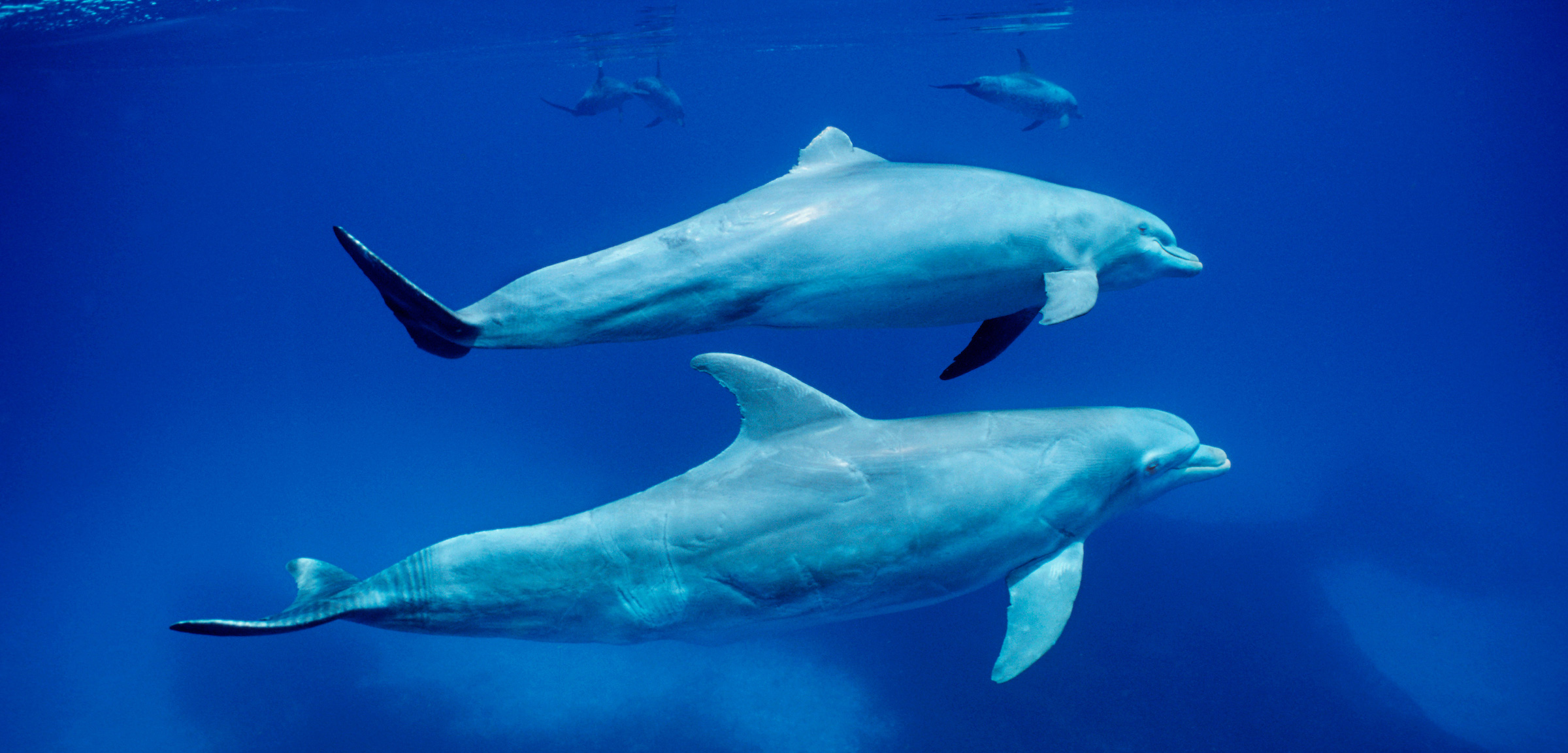A Dolphin Double Whammy
Injured dolphins are being unfriended by those in their social network.
Article body copy
Dolphins are among the most social creatures in the animal kingdom, with relationships so complex that they’re often compared to those of primates. But a certain primate—humans—can disrupt dolphin bonds.
According to a new study, a dolphin that’s been injured by a boat or fishing gear faces social consequences—in the most striking cases, the injured dolphin is cut off from some of its closest peers.
For 50 years, scientists with the Sarasota Dolphin Research Program (SDRP) have been studying common bottlenose dolphins in Sarasota Bay, an estuary on Florida’s Gulf Coast that attracts recreational fishers and boaters. Like many other dolphins, the bay’s 170 animals live in a fission-fusion society, in which groups of various sizes come together and separate over time. Within these groups, individuals have a network of preferred associates.
In 2017, Michelle Greenfield, then an intern with SDRP, wanted to know if the research program’s extensive data set, which spans six generations of dolphins, could shed light on how human-caused injuries affect dolphins’ social lives.
Greenfield and her colleagues examined 24 dolphins that had sustained injuries from boat strikes or entanglement between 1982 and 2018. The researchers identified those animals’ social circles in the year prior to injury and in the two years following. Greenfield found that while the injured dolphins retained their strongest bonds—for example, between a mother and its calf, or between males that had formed an alliance—their other associations seemed to decay. The injured dolphins were still part of a group, but they were less likely to be found with their former best buddies.
A few hypotheses exist as to why a dolphin’s social ties unravel after it gets hurt. An injured dolphin might be more vulnerable to predation, says Greenfield, so other dolphins may see it as a liability. That might also make injured dolphins less choosy about who they hang around, she says—so long as they have someone to turn to for protection.
Randall Wells, a marine mammal biologist and director of SDRP who coauthored the new study, emphasizes that dolphins are long-lived animals that rely on other dolphins for survival. So, although a dolphin can carry on after an injury, its social life might not recover immediately. That might have far-reaching consequences for the larger dolphin population, adds Wells.
It’s also possible a dolphin’s personality changes after it’s hurt, making it no longer appealing to its former BFFs. “Honestly, we don’t know the reasons why they behave the way they do,” Greenfield says.
Maddalena Bearzi, the president of the California-based Ocean Conservation Society and a marine mammal biologist who was not involved in the new research, says the study is compelling because it directly shows how human-caused injuries disrupt dolphins’ social lives. “The problem is that often our impact on cetaceans is difficult to see on the spot,” she says.
One thing is clear: when a dolphin gets injured, its community feels the effects. That makes it critical for people to be more mindful of how they interact with wildlife, says Greenfield.

